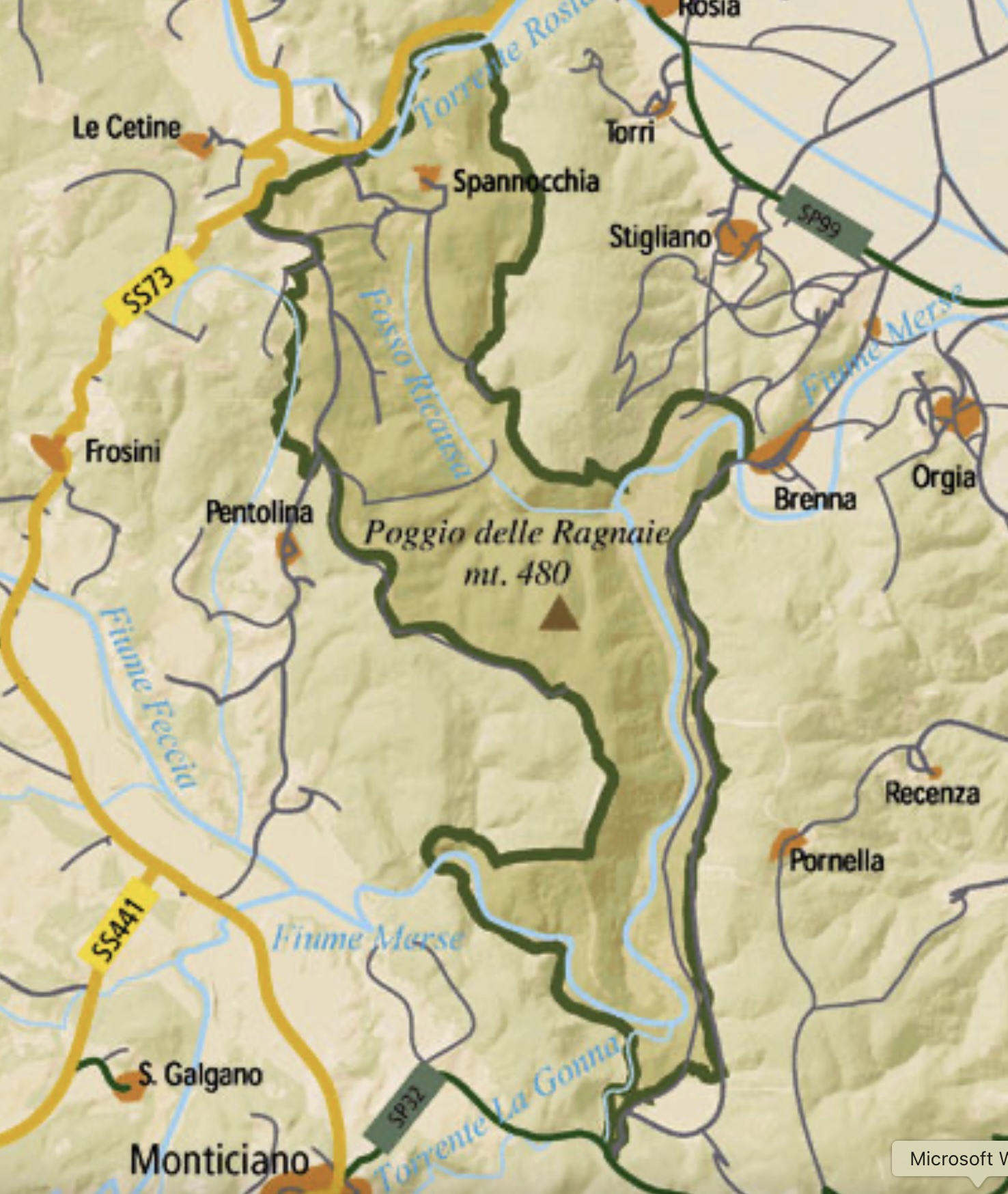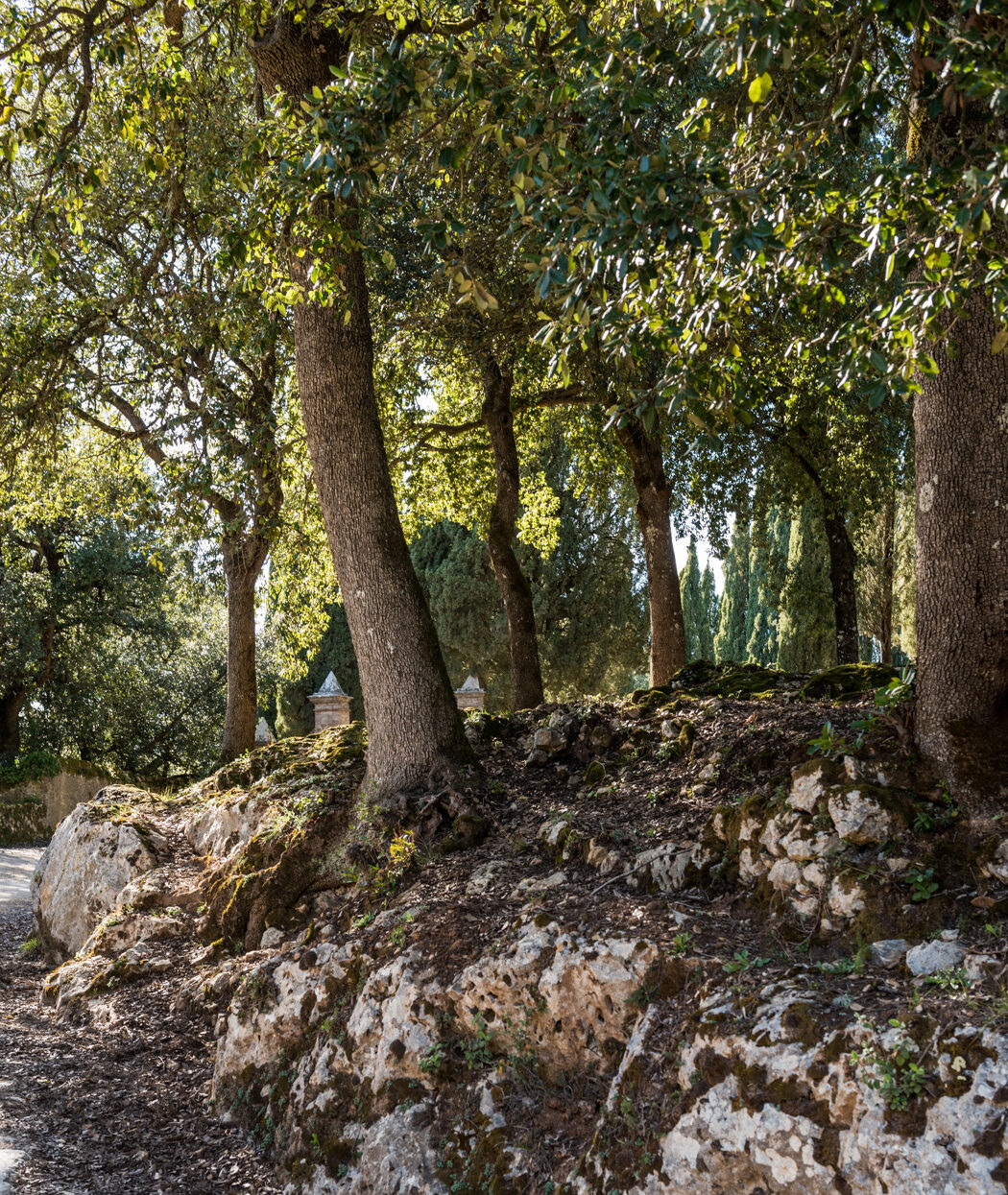AUGUST 2025 THEME: BIODIVERSITY & THE ALTO MERSE NATURE RESERVE
One of the most unique features of the 1,100-acre Spannocchia property is that it lies completely within Tuscany’s 5,000-acre Alto Merse Nature Reserve. Spannocchia is the only working farm found in the Reserve, which consists mostly of wooded forests, the Merse river, and several smaller tributaries. This expanse of forest sets the land of the Reserve apart from other areas of Tuscany–such as the rolling, grassy and cypress tree-dotted Sienese hills that tend to be very symbolic of the region. Spannocchia does have beautiful old cypress trees around the property, but the Nature Reserve’s mature forests are comprised predominately of deciduous hardwoods like Turkey oak, Sessile oak, and chestnut trees—all of which thrive in the siliceous soils found here. Together with meadows and rivers, this environment provides a variety of habitats that encourages a rich biodiversity of both flora and fauna.
For centuries, the Reserve’s natural resources were used for lumber, grazing animals, and harvesting chestnuts (for both nuts and flour). Historically, there were water-powered grain mills along the rivers–in fact, Spannocchia used to store its grain in the building off the courtyard that we now call the Museo (museum), before bringing it by oxcart down the hill to the river to be milled. This changed in the 1950s or ‘60s when an electric mill was installed next to the Museo (in what is now one of our staff offices!). Around Spannocchia we also see the evidence of the mezzadria (sharecropping) farming that was practiced on the land for centuries: large clearings amid the forest, some still cultivated, others covered in grasses and shrubs. One particularly notable geological feature of the land around Spannocchia is a unique yellow marble (marmo giallo), which up until recently was mined from a nearby quarry.
Thanks to the rich forests and riparian habitats, the Reserve is a refuge for a multitude of animals. If you’ve been to Spannocchia you likely noticed—and hopefully appreciated—the constant presence of several varieties of bird, whose calls fill the air all day long. These include barn swallows and other songbirds, but also woodpeckers, buzzards, kestrels, short-toed eagles, and multiple types of owls. Wild mammals, especially deer and wild boar, are prevalent throughout the Reserve, as are skunks, wild cats, and a growing population of wolves. Smaller animals like spectacled salamanders, lizards, Italian frogs, crayfish, a small snail exclusive to Italy, a rare snake species, several kinds of dragonflies, and four endemic species of fish can also be found near or in the rivers.
Everything within the confines of the Nature Reserve is protected, from wild animals to trees and plants, even the brush and undergrowth. Hunting is forbidden, and foraging for mushrooms is permitted only with a license. In addition to the range of trees, the woods of Spannocchia also contain a great variety of wild fruits, shrubs, and ferns, as well as mushrooms and truffles. We are allowed to cut certain areas of forest, those used in the past for firewood and charcoal, under strict control of the Italian forestry department. We never clear cut, but instead follow the “coppicing with standards” method which leaves a healthy tree approximately every 30 feet, for a total of 40 trees per acre. Additionally, we adhere to a lengthy rotation period, leaving about 20 years before we cut from the same patch of forest again. This encourages and allows for the regeneration of new trees, protects the local hydro-geologic systems, and helps to conserve the natural environment.
Along with all of the virtues of the Nature Reserve, however, Spannocchia also faces some unusual challenges because of it. The wild animal populations—in particular, deer, wild boar, and wolves—considerably complicate our farming operations, frequently causing damage to our crops and posing a threat to our Cinta Senese pig population. In 2022, with financial assistance from the Italian government, we built a new, complex fencing system to protect the pigs: two kilometers (1.25 miles) of perimeter fencing, dug 50 centimeters (1.5 feet) into the ground and over two meters (7+ feet) in height, plus an interior ring of fencing about two meters (6 feet) inside the outer fence. This has (for now!) successfully eliminated the mixing of our pigs with wild boar, which protects against disease transfer and potential impregnation. It also keeps out wolves, who could otherwise prey on the younger pigs.
In addition to the beautiful, rural landscape and abundant biodiversity, a network of well-marked hiking trails both on and beyond the Spannocchia property enrich the experience for guests and locals alike. Connecting to the land, conservation, and environmental stewardship are key tenets of Spannocchia, and being part of the Alto Merse Nature Reserve is not only perfectly aligned with this, but has also helped us embrace and honor these values over these last many decades.


